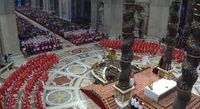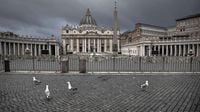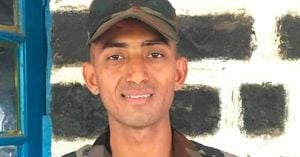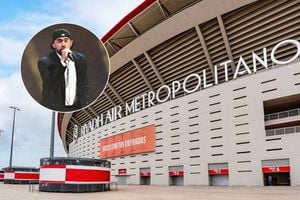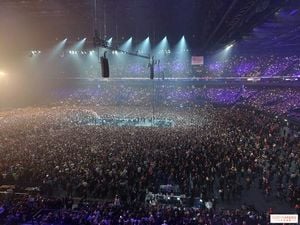On May 7, 2025, a historic moment unfolded in the Vatican as the conclave commenced to elect the successor to Pope Francis. The proceedings began with the 'Pro Eligendo Pontifice' mass held at 10:00 AM, which set the stage for the significant decisions that would follow. This conclave marks the most numerous in history, with 133 cardinals eligible to vote, making it a pivotal event in the Catholic Church's leadership.
More than 5,000 attendees gathered for the mass, presided over by Giovanni Battista Re, the dean of the College of Cardinals. During the mass, Re urged the cardinals to focus solely on the welfare of the Church and humanity when casting their votes. He emphasized the need for a pope who could unite the Church, saying, "We need a pope who will awaken consciences and moral forces in a society marked by technological progress but that forgets God." This call for unity resonated strongly as the cardinals prepared to enter the conclave.
Following the mass, the cardinals shared a communal lunch before the procession to the Sistine Chapel, expected to begin at 4:30 PM. This procession is steeped in tradition and symbolizes the cardinals' commitment to their sacred duty. As they made their way to the chapel, the atmosphere was charged with anticipation, knowing that their decisions would shape the future of the Church.
Once inside the Sistine Chapel, the cardinals would be sealed off from the outside world, with strict security measures in place. The 'Extra omnes' formula, pronounced by the master of ceremonies Diego Giovanni Ravelli, would signal the expulsion of all non-electors from the chapel, ensuring confidentiality during the voting process. This isolation is crucial for maintaining the integrity of the election.
As the first round of voting commenced, expectations were tempered. Many observers anticipated a black smoke signal, indicating that no pope had been elected during the initial ballot. The first fumata is expected around 7:00 PM, and subsequent voting rounds would take place daily, with two sessions each morning and afternoon until a candidate secures the required two-thirds majority of 89 votes.
The cardinals participating in this conclave represent a diverse global Church, with 53 from Europe, 37 from the Americas, 23 from Asia, 18 from Africa, and 4 from Oceania. Among them, six are Spanish: Juan José Omella, Carlos Osoro, Antonio Cañizares, Ángel Fernández Artime, José Cobo Cano, and Francisco Javier Bustillo. Notably, Osoro, who turns 80 on May 16, is the oldest cardinal and has been a significant figure in the Spanish Church.
The conclave's preparations included meticulous arrangements for the voting process. The ballots will be burned after each round, with the resulting smoke signaling the outcome to the public outside. Historically, there has been a shift from using wet straw for white smoke and tar for black smoke to a more reliable chemical method to ensure clarity in communication.
As the cardinals convened, they were reminded of the reforms initiated by Pope Francis that many believe should continue. These reforms include combating abuse, promoting economic transparency, reorganizing the Curia, fostering synodality, committing to peace, and caring for creation. The cardinals' discussions leading up to the conclave reflected a desire to maintain these priorities while navigating the complexities of modern-day challenges.
In the wake of Pope Francis's death, speculation about potential successors intensified. Candidates such as Pietro Parolin, the Vatican's Secretary of State, and Luis Antonio Tagle, the Archbishop of Manila, emerged as frontrunners. Parolin is viewed as a candidate who embodies continuity with Francis's vision, while Tagle is known for his strong social advocacy and connection to the global Church.
As the day progressed, the cardinals prepared to cast their first votes in the historic setting of the Sistine Chapel, under the watchful gaze of Michelangelo's masterpieces. The solemnity of the moment was palpable, with each cardinal aware of the weight of their decision. The outcome of this conclave will not only determine the next pope but also signal the direction the Catholic Church will take in the coming years.
The process of electing a new pope is steeped in tradition and secrecy, with the cardinals swearing an oath to maintain confidentiality throughout the conclave. This commitment underscores the gravity of their task, as they seek to elect a leader who can guide the Church through contemporary issues and spiritual challenges.
As the first fumata is anticipated, the world watches with bated breath, eager to learn who will emerge as the 267th pope of the Catholic Church. The decisions made within the walls of the Sistine Chapel will resonate far beyond the Vatican, shaping the future of millions of Catholics worldwide.

